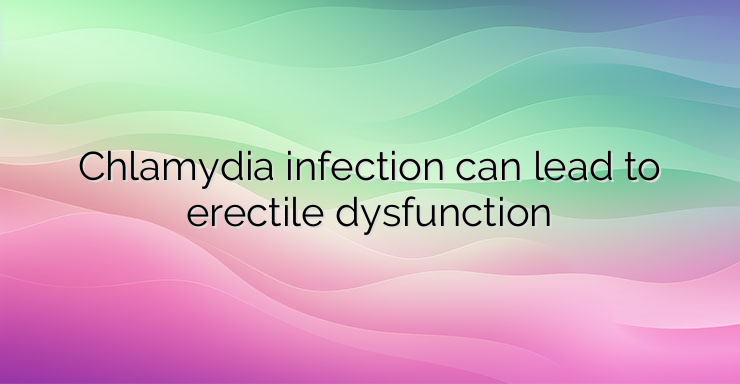What problems does chlamydia infection cause? Chlamydia is a sexually transmitted infection that can cause long-term health problems. In many cases, chlamydia infection (chlamydia) does not cause symptoms and patients do not know they have the infection. Some men with chlamydia have difficulty getting or maintaining an erection, which is called erectile dysfunction. This difficulty occurs when chlamydia infects the prostate gland, leading to prostatitis. If left untreated, chlamydia can lead to: Chronic prostatitis, causing pain and erectile dysfunction, in men; Increased risk of HIV infection; Permanent infertility and a painful condition called pelvic inflammatory disease in women. How does chlamydia cause erectile dysfunction? Chlamydia can infect the prostate, causing a complication called prostatitis, which can lead to erectile dysfunction. If chlamydia enters the genital tract, it can spread to nearby organs. In men, chlamydial bacteria can infect the urethra, which is the tube through which sperm travel to exit the body. Over time, bacteria can travel through the urethra to the prostate gland. If the prostate becomes infected and inflamed, it can restrict blood flow to the penis, possibly making it difficult to get or maintain an erection. The US Centers for Disease Control and Prevention (CDC) informs that chlamydia can be passed to a sexual partner even when the man does not ejaculate during intercourse. What are the symptoms of chlamydia? Chlamydia often do not cause complaints. In some cases, symptoms appear several weeks after the initial infection, and by then the infected person may have spread chlamydia to someone else. When chlamydia causes symptoms, they may include: A burning sensation when urinating; Discharge from the penis or vagina; Pain or swelling of the testicles, which is less common. Chlamydia can indirectly cause erectile dysfunction, but this does not mean that a man with erectile dysfunction necessarily has chlamydia or another sexually transmitted infection. In the event of problems with obtaining or maintaining an erection, consultation with a doctor is necessary, who can advise the patient on treatment. What is the treatment for chlamydia and erectile dysfunction? Testing for chlamydia may involve taking a sample of urine or through a swab from the inside of the urethra for analysis. If a chlamydia infection is confirmed, the person should begin treatment immediately. It is essential that the patient discuss the diagnosis with each of their sexual partners, including previous partners who may have contracted and spread the infection. Informing sexual partners about the diagnosis will allow them to get tested and start treatment if necessary. Treatment of chlamydia requires the prescription of antibiotics.It is crucial to follow the prescription as given by the doctor. Failure to complete the full course of treatment may mean that some bacteria may survive and cause a new infection. A full course of antibiotic treatment can cure the infection causing prostatitis, which can relieve the symptoms of erectile dysfunction. Multiple chlamydia infections are possible. Completing the course of treatment cures the infection but does not create immunity. Any patient diagnosed with chlamydia must avoid all sexual contact for 7 days after taking the single dose of antibiotic or during the 7-day course of treatment. References: 1. Centers for Disease Control and Prevention (CDC). Chlamydia�CDC fact sheet 2. Health and Human Services (HHS). Chlamydia 3. National Center for Biotechnology Information (NCBI). Brookings, C., Goldmeier, D., & Sadeghi-Nejad, H. (2013, March 15). Sexually transmitted infections and sexual function in relation to male fertility 4. National Institute of Diabetes and Digestive and Kidney Diseases (NIDDK). Prostatitis: Inflammation of the prostate 5. Medical News Today. Chlamydia and erectile dysfunction: What’s the link?


Leave a Reply